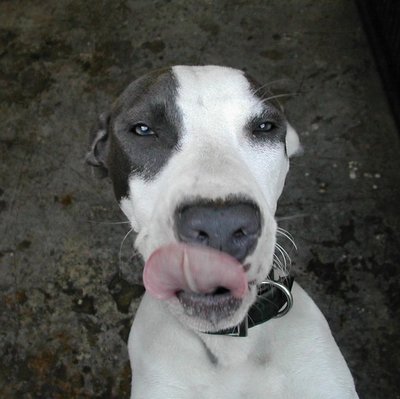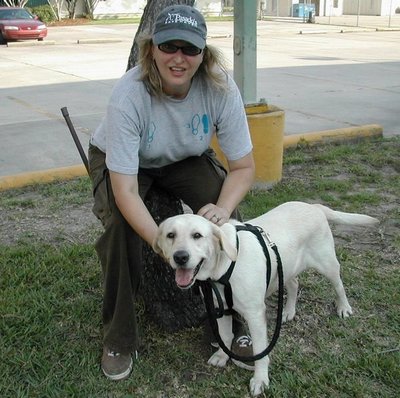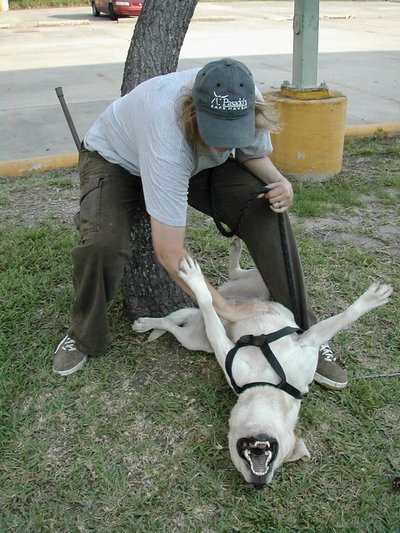November 30, 2006
Rescuing Furry Hurricane Victims: UW admissions specialist returns to New Orleans to help still-recovering abandoned pets
Editor’s note: Karin Dalesky, an admissions specialist in Interdisciplinary Arts & Sciences at UW Tacoma, has twice gone to New Orleans to tend to pets who are victims of the hurricanes. This first-person account of her 2006 trip was first published in the UWT newsletter, Inside Track.
By Karin Dalesky
UW Tacoma
When I returned from the desolate ruins of Louisiana in September of 2005, many colleagues at UW Tacoma said that what I had done was heroic. But I didn’t feel much like a hero.
I had seen mile after mile of destruction, people who had lost their family members and all of their worldly possessions, and countless lost and bewildered animals that remained loose on the streets. I knew I had to go back.
So I revisited New Orleans in late August this year to help in the continuing effort to rescue animals that were lost or abandoned during Hurricane Katrina. I spent a week at Animal Rescue New Orleans, or ARNO, working with 30 dogs and more than 70 cats and kittens that had been captured on the streets, pulled out of high-kill shelters or surrendered by owners who did not have the means to properly care for pets. We spent much of our time in sweltering southern heat, cleaning cages and food and water bowls, walking dogs and giving lots of love to these unfortunate souls who were homeless through no fault of their own.
One of these sad sweeties was Queenie, an older, mixed-breed who was found in February in a bathtub, surrounded by her puppies. She had survived Katrina and Rita, apparently suffering a severe stroke as a result, and was obviously still devastated by these tragic circumstances. She was such a sweet girl and so patient with her kennel mate, an energetic young pit bull puppy named Issablue. From what I gathered, Issablue was pulled from a high-kill shelter, where she certainly would have been euthanized.
Hank and Dusty, two beautiful golden retrievers, were relinquished to ARNO by their owners, who could no longer afford to keep them. Three puppies, Rosie, Foxy and Daisy, were purchased for $10 each from drug dealers. Whatever the circumstances, ARNO has stepped up to help these abandoned and homeless pets until they can find a home.
We spent one day feeding and watering pets in New Orleans East, which seems to be a forgotten part of the city. Most houses are still uninhabited and unlivable, but the animals remain. One of the first sights to greet us upon entering this part of the city was the remains of what appeared to be a chocolate lab, which had obviously been there for some time. It was a stark reminder that time is of the essence, and I felt so badly for the suffering it must have endured. I silently blessed it and apologized to its soul, wishing there was some way we could have been there in time to rescue this poor dog.
It was difficult, if not almost impossible, to capture many of the dogs and cats we saw. In the year since Hurricane Katrina struck the Gulf, many former pets are now terrified of humans. We saw several dogs who traveled in pairs — they were always emaciated, skittish and in obvious need of food, water and medical treatment. We also left food and water for feral cats and kittens, who shunned our rescue attempts. Finally, we did manage to trap two dogs. One of them, a young beagle we named Barney, was recently adopted into a new home.
On the one-year anniversary of Hurricane Katrina, we set out to find one of several memorial tributes occurring throughout the city. We became completely lost and found ourselves on the road to St. Bernard Parish. I viewed this as a fateful intervention and felt compelled to visit the area, the site of a vicious and senseless slaughter of 33 innocent pets.
As Katrina’s storm surge rose above 20 feet, residents of St. Bernard Parish had evacuated to three neighborhood schools. When the rescue crews arrived, citizens were ordered to leave their pets, with promises from law enforcement officers that the animals would be safe. An animal rescue group arrived at the schools days later and discovered that these beloved pets had been shot. The animal rescue group I worked with last year, Pasado’s Safe Haven, has filed a civil case against the accused shooters.
It was strangely silent on the school grounds, and a tattered flag that must have endured the storm eerily flapped in the light, late summer breeze. I tried not to think of the fact that just slightly over a year ago, all of the murdered animals were with their loving caretakers in safe places, still unaware of the fate that awaited them. I sent a silent blessing to those poor critters, whose only crime was being in the wrong place at the wrong time.
Later that day, we attended a jazz-themed funeral in honor of the first responders to the disasters. I was anxious to experience this component of New Orleans culture. The procession began at the now-infamous Convention Center and ended at the Superdome. I expected huge crowds, but that wasn’t the case, since half of the city’s residents remain scattered across the country.
The range of emotions I felt was almost overpowering: joy as the brass band passed, sorrow when the hearse stopped in front of us and fascination as a variety of New Orleans organizations and groups strolled by. The jazz procession was certainly one of the most emotionally intense events that I have ever experienced, and it revealed to me the unique spirit and cultural tradition of this magnificent city.
As I walked its streets, I heard the words of Jackson Browne’s For a Dancer:
“Don’t let the uncertainty turn you around
Go on and make a joyful sound
Somewhere between the time you arrive
And the time you go
May lie the reason you are alive”
The spirit of these words captures what I have found in my last two trips to New Orleans. I’m making plans to return next August.



